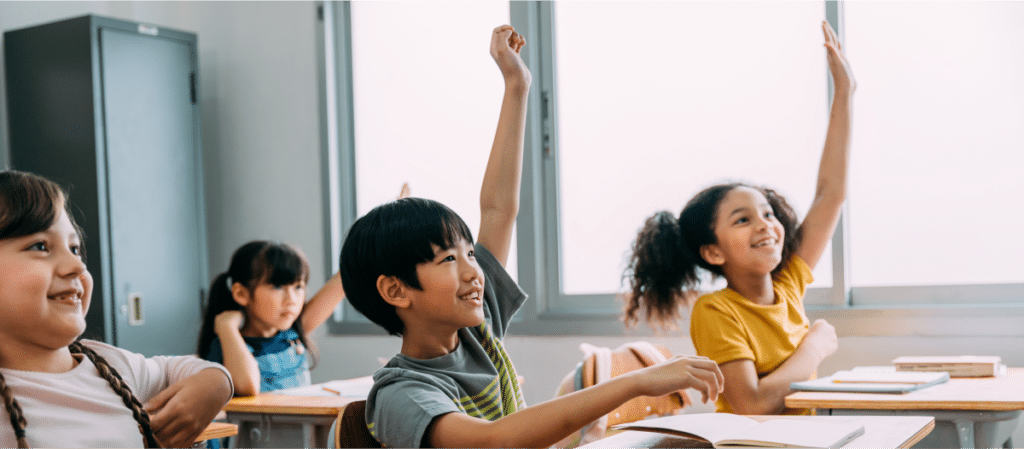
Albert Einstein once said that the value of education “is not the learning of many facts but the training of the mind to think something that cannot be learned from textbooks.” As educators, we strive to engage students, drawing on their knowledge and experiences so they can draw upon their creativity, reasoning skills, and curiosity about the world around them. Take a moment to consider your current practices. How do you promote higher-level thinking skills with your students? Where within your day and lessons do you elicit thoughtful responses from students?
Whether you are working with four-year-olds or fourteen-year-olds, it is your job to guide them in developing their thinking skills, using what you know about where they are developmentally. One of your main tools for this task is open-ended questions. Open-ended questions can perform many of the same functions as closed-ended questions, such as when you want to check for student understanding or get specific information, while also adding an important dimension: you get to coach students as they practice the skills that extend their knowledge and understanding.
Try out some of the following ideas to promote engaged thinking and enhanced reasoning from your students:
We have all started with a question stem that we thought would elicit a variety of responses, only to find it did not produce the desired result. This is where the incorporation of words like might, may, could, possibly, and some can quickly enhance the outcome of the question. Instead of sounding like there is only one specific answer, these words can help students feel like they are brainstorming and encourage them to generate multiple solutions and responses. Here are a few question stems to get you started:
This is the third guiding principle for Responsive Classroom, and it is especially powerful when you consider how students can engage in conversations and share their thinking. When you use interactive learning structures, students get to to move around while also being set up to share their thoughts and ideas with peers. In this practice, students share with multiple partners in structured conversations, allowing for the collaboration of ideas. Consider how some of these interactive learning structures can be used with your students. (Remember, when teaching a new structure with students, it’s important to model the expectations and use effective management to promote success!)
In addition to being part of the natural learning cycle, reflection is key for enhancing learning at all ages. It provides an opportunity for us to learn from our mistakes while also fostering a growth mindset. As educators, we reflect daily on our lessons, individual students, and how we can improve in our craft as teachers. We also need to consider how reflective questions can support the growth of our learners.
When you include self-reflection in lessons, you allow students to extend their vision of themselves as learners, recognizing that mistakes are part of the learning process and will help to strengthen their social, emotional, and academic competencies. Try one of the following open-ended prompts during your closing routine to allow students to reflect on the day’s success, including any progress they made toward their goals:
These ideas aren’t an extra responsibility. Instead, consider how they can support what you already do. A few words tweaked in your question can cause a quick shift in students’ responses. Substituting in an interactive learning structure for a more conventional conversation can create novelty and promote a positive community. A reflective question at the end of the day can allow students to consider their learning and prepare for the next day’s successes.
Most important, we must remember the end goal of open-ended questions. As we are reminded in The Power of Our Words for Middle School, “By drawing on students’ own ideas, knowledge, skills, experiences, and feelings, these questions stretch their curiosity, reasoning ability, creativity, and independence” (p. 61). It is our responsibility to train minds . . . one question at a time!
Jenni Lee Groegler Pierson is a contributing author for Empowering Educators: A Comprehensive Guide to Teaching Grades 3, 4, 5 and author of multiple Quick Coaching Guides, including Joyful Gatherings and Seeing That Students Belong and Are Significant.